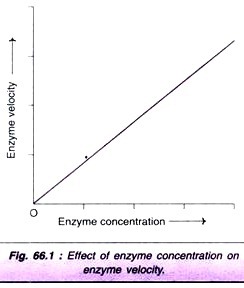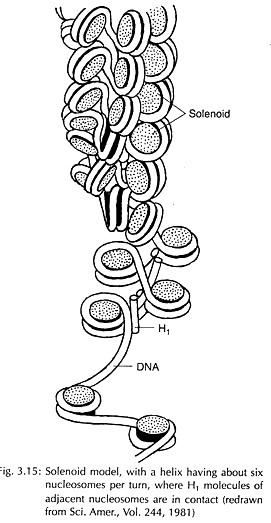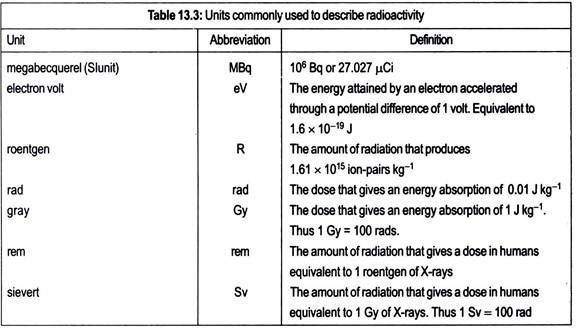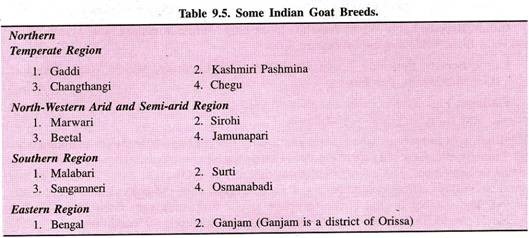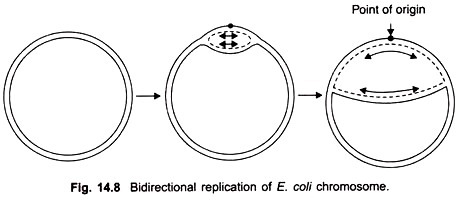ADVERTISEMENTS:
What are Sense organs?
Sight, hearing and balance, smell and taste are called the special senses. There are separate organs located on various body parts for particular senses.
These organs are called sense organs; e.g., for sight, there is a pair of eyes; for hearing and balancing, a pair of ears; for smell, one muscular structure, the nose and for taste another muscular structure in the mouth, the tongue. The sense of touch is detected by the skin.
ADVERTISEMENTS:
The Eye:
The eyes (Fig. 7.1) are delicate organs, located in deep sockets of orbits on the front side of the head. The eye ball can be rotated in the eye orbit with the help of muscles. The eyebrows shade them from bright light, and also prevent the entry of water and dust into the eye from the above. The outer surface of the eye is protected by upper and lower eyelids which can be moved. Tear glands are present at the upper lateral portion of the orbit. A watery fluid with salt is secreted by the tear glands.
 The eye ball is hollow and its wall is made up of sclera, choroid and retina. The sclera is tough, non-elastic provides a fibrous coat around the eye ball. The choroid a layer of tissue lining, the sclera, is richly supplied with blood vessels for the eye. The retina is a layer consisting of light sensitive cells.
The eye ball is hollow and its wall is made up of sclera, choroid and retina. The sclera is tough, non-elastic provides a fibrous coat around the eye ball. The choroid a layer of tissue lining, the sclera, is richly supplied with blood vessels for the eye. The retina is a layer consisting of light sensitive cells.
These light cells are rods and cones. Rods are cylindrical, have rhodopsin pigment and are associated with dim light-vision (scotopic vision). The cones have pyramidal shape and contain iodopsin pigment and are associated with bright light vision (photopic vision) and colour vision. Pigment cell layer of retina is composed of single layer at hexagonal epithelial cells, having dark brown pigment called fuchin.
ADVERTISEMENTS:
The optic nerve is attached to the retina. The light rays coming from an object cross the aqueous humour, a thick fluid, and pass through the crystalline lens and the vitreous humour, (a jelly like fluid) to form an image of the object on the retina. This sensation is carried to the brain by the optic nerve. The pupil regulates the amount of light entering in the eye (Fig 7.2 a & b). There is a yellow spot on the retina, which is more sensitive to light. This is the region of brightest vision. Just below the yellow spot there is a blind spot which has no sensory cells. This is the point of no vision.
There are some common eye defects such as Myopia, (Fig. 7.3) in this, near vision is clear for a person while distant vision is blurred. The lens becomes too convex or due to elongation or lengthing of the eye ball is the cause of this defect. Concave lens is used to correct this disorder. Astigmatism, this is due to the irregular curvature of cornea and formation of image is prevented on retina, defect can be removed by using cylindrical lens.
Retina detachment, Retina detaches from the choroid, due to this, retina billow out towards the vitrous body, this leads to distorted vision and blindness in the corresponding field of vision. Hypermetropia (Fig. 7.4) (long-sight) in this distant vision is clear while near vision is blurred. The lens is less convex or eyeball is too short from front to back, in this defect, biconvex lens is used.
Cataract, in this, transparency of the lens is lost it is corrected by replacing the lens. Nightblindness, when a person is having difficulty to see at night or dim-light, due to the failure in the formation of visual purple of the rod cells, this is due to lack of vitamin A. Colour blindness, when an individual cannot distinguish some colours from others, this is due to the missing of some cone cells from retina.
The Ear:
The sensation of sound is received by the ears (Fig. 7.5). The external part of the ear is called pinna which has a cartilaginous structure. The outer ear is a tube which opens on the side of the head and leads inward to the eardrum. The middle ear contains three small bones, called hammer, anvil and stirrup, and an eustachian tube which connects the cavity of the middle ear with the throat. These three bones are called ear ossicles. The inner ear consists of cochlea and semicircular canals.
The cochlea is filled with a fluid, semicircular canals help to provide balance and a sense of position to the body. The external ear, pinna, collects sound waves and conducts them through the auditory canal. These waves strike on the ear drum, producing vibrations of the ear drum. These vibrations are carried to the brain by the auditory nerve.
The Nose:
The nose is a muscular part situated on the face, just above the lips. There are sensory cells of smell in the mucous membrane of the upper part of the nose, nerve fibers from these cells pass into the brain. (Fig. 7.6) These cells are stimulated by chemical substances which arrive in the air, breathed in through the nose, and get dissolved in the mucous covering of the mucous membrane of the nasal cavity. The sense of smell is carried to the brain by the olfactory nerve.
The Tongue:
ADVERTISEMENTS:
The tongue is a muscular structure located in the mouth (Fig. 7.7). It is sensitive to taste. The taste buds are situated on the upper surface of the tongue. These are connected to the taste centres of the brain through nerves. Taste buds for sweetness and saltiness are present at the tip of the tongue, sourness is detected by the sides, and bitterness is detected at the back.
The Skin:
ADVERTISEMENTS:
Skin the largest organ of human body. The skin is a sense organ of touch. The skin is mainly divided into two parts, epidermis and dermis.
Epidermis:
Epidermis is the outer layer made up of epithelial tissue (Fig. 7.8). At some places epidermis is thick and hard as on the palms, soles and on the heals. It is devoid of blood supply at all the places. The thinnest skin in human body is conjunctiva. Colouration of the skin is due to the pigment melanin present in epidermis.
Dermis:
ADVERTISEMENTS:
The inner layer is dermis which is made up of connective tissue. Dermis contains hair follicle and erector muscles. Dermis contains blood supply and nerve endings. The nerve endings and sense organs here are concerned with sensations of touch and pain.
Dermis part of skin contains sebaceous glands and sweat glands. Sebaceous glands produce oil secretion called sebum which keeps hair and skin soft. Sweat glands help to excrete out sweat from the body. The modified sweat glands are called mammary glands in the females. Skin regulates body temperature and helps in excretion. The skin synthesis vitamin D. The skin protects our body against excess ultraviolet radiations also.
Taking care of sense organs:
We should be very much careful regarding the cleanliness and proper maintenance of our sense organs since we perceive all the changes around us and respond to them.
1. We should splash our eyes with water in the morning and also after a long journey.
ADVERTISEMENTS:
2. We should avoid watching the television on short distance, proper distance should be maintained to watch the television to avoid over straining the eyes.
3. Sufficient light should come on books or copies during study time.
4. Keep sharp objects away from the eyes.
5. Wear sunglasses of good quality on bright sunny days.
6. If you feel that Iron dust or Iron filings has fallen in your eyes do not rub your eyes, take the help of your adults to take it out with the help of magnet.
7. We should avoid reading in moving vehicles.
ADVERTISEMENTS:
8. If you have any problem in reading on board in your class you should visit to ophthalmologist.
9. You should eat vegetables & fruits rich in vitamin A.
10. Reading materials should be kept at comfortable distance from the eyes to avoid strain.
Ears:
1. We should avoid sharp objects to clean our ears, it can injure our ear drum.
2. Earwax should clean by soft cotton buds like Johnson buds.
3. We should avoid our ears to expose to loud noise.
4. When you sleep on floor, you should close the openings of your ears by cotton to avoid entry of any (poisonous) worm.
5. Never put oil into the ear.
Skin, Nose and Tongue:
We should take bath regularly so that the pores of the skin do not get closed. For bathing purpose we can mix liquid Dettol or savlon in water or can use any germicidal soap. Unclean skin may lead to skin infections. Time to time nose should be cleaned and avoid inserting any object like pencil or pen in the nostrils as the damage of inner lining of nasal chamber may take place. Tongue should be cleaned regularly by tongue cleaner.
The Endocrine System:
Nervous system controls and keeps co-ordination between the systems of human body. Similarly some functions are controlled by the chemicals released by some glands. These glands are called endocrine glands, and chemicals are called hormones. Hormones regulate the growth and development of the body. Bayliss and Starling two British scientists gave the term ‘hormone’ in 1902. The branch of biology concerned with the study of structure and functions of endocrine glands is called endocrinology. Thomas Addison is father of endocrinology.
Some important endocrine glands are as follows:
1. Thyroid gland:
This gland is bilobed, and is situated in front of the neck below the larynx. This gland secretes a hormone, known as thyroxin, which regulates the rate of metabolism in the body and also effects the general growth of the body. If this gland is under active (Hypo-secretion) it results in the formation of swelling in the neck, which is called goitre (Fig. 7.9). Over secretion (Hyper-secretion) of this gland may also cause another type of goitre called Exopthalmic goitre and rapid heartbeat with shortness of breath.
2. Pituitary Gland:
This gland hangs (Fig. 7.10) from the base of the midbrain. It is also called master gland. It has two Fig. 7.9. Goitre, parts an anterior lobe and a posterior lobe. The anterior lobe produces the growth hormone which stimulates the growth of the body.
The posterior lobe produces oxytocin hormone which stimulates contraction of the uterus in a pregnant women. The deficiency of the growth hormone leads to dwarfism in children. Over activity of the growth hormone leads to gigantism in the young and acromegaly in the adults (gorilla-like appearance).
3. Adrenal Gland:
This gland is cap-like structure located on each kidney. This gland produces adrenalin hormone which regulates the blood pressure, and also prepares the body to meet emergencies and to be ready to fight. It also regulates salt and water balance in the body. Hyper secretion of adrenalin leads to prolonged fight symptoms which wears down the individual.
4. Pancreas:
Pancreas (Fig. 7.10) is ductless gland as well as a duct gland. Pancreas contains special cells called the Islets of langerhans. These are of two types- Alphacells and Betacells. Alpha cells secrete glucagon, which stimulates the break-down of glycogen into glucose in the liver. The betacells secrete the insulin hormone which controls absorption of glucose by the body cells. Hypo secretion of insulin leads to diabetes mellitus and hyper secretion of insulin leads to insulin shock.
5. Sex Glands:
Sex glands are (Fig. 7.10) the testis in the male and ovary in the female. The testis produce testosterone hormone which controls the development of the male sex organs and secondary sexual characteristics, ovaries produce progesterone hormone, which controls the enlargement of uterus walls and enlargement of mammary glands during pregnancy.

